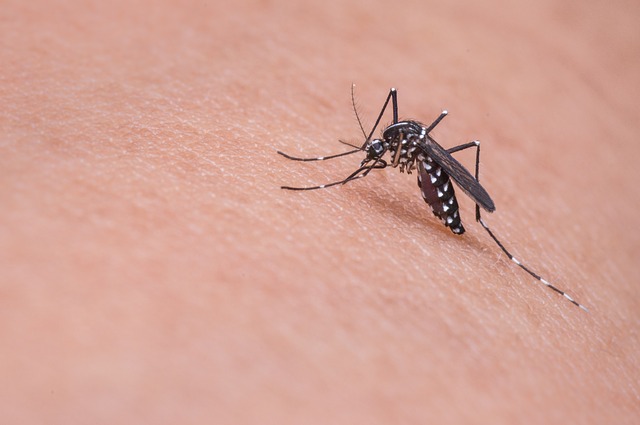Controlling mosquitoes to prevent the spread of disease requires planning, not last-ditch efforts.
As a parent it is heart-wrenching to see the photos of children in Brazil that have been born with microcephaly, and it is very worrying to consider that the steep rise in this birth defect may be caused by a mosquito-borne disease. The cause of these birth defects is not fully understood but they are thought to be linked to cases of the Zika virus which is spread to people primarily through the bite of an infected Aedes mosquito. The illness caused by Zika is usually mild. In fact, so mild that many people don’t realize that they are sick. Most people don’t get sick enough to go to the hospital, and deaths due to Zika are very rare.
The concern with Zika is not the discomfort that people feel from the virus, but the potential link to microcephaly, which causes babies to be born with heads smaller than expected and often brains that have not developed properly. Doctors in Brazil have found a strong correlation, but not a causal link, between women who contract the disease while pregnant and the recent rise in microcephaly. Another area of uncertainty with Zika is transmission. While Aedes mosquitoes are a vector, sexual transmission of Zika is possible. At the time, mosquitoes in the continental United States are infected with Zika. The few Zika cases in the U.S. have been linked with people who brought the disease back from other countries.

There is still a lot we do not know about Zika. The virus was first discovered in 1947 in Uganda and spread relatively slowly across parts of tropical Africa, Southeast Asia, and the Pacific Islands. Despite its long history and wide distribution, there was no association between Zika and microcephaly until the virus was identified in Brazil in 2015. Governments from across the world have come together to try to find out why there has been a rise in microcephaly and the best way to control Zika.
The question is what do we do to control this disease and the mosquitos that vector it? In many parts of the world, including the U.S., spraying pesticides is the kneejerk reaction to mosquitos. Many people think that we can just spray the areas where mosquitos are found and that will take care of the problem. The data from mosquito control efforts over the last 150 years shows that relying on insecticide spraying for mosquitos does not work well. Using insecticides can also have profound impacts on the many insects that are food for birds and fish, and some insecticides are linked to cancer in humans.

It is important to note that most mosquito species do not transmit diseases. Of the approximately 175 species of mosquitoes in the U.S., only two species are known to transmit Zika, Aedes aegypti (the yellow fever mosquito) and A. albopictus (Asian tiger mosquito). Although these species are found in some parts of the U.S., none of the mosquitoes in the United States are infected with Zika.
We must make sure we approach this crisis with care to ensure that what we do is effective and does not cause undue harm to the environment or to the public. The Centers for Disease Control and Prevention and the World Health Organization agree on the overarching methods to manage mosquito-borne illnesses.
The first is personal protection. Preventing bites by wearing long pants and shirts, making sure screens are intact, using mosquito netting and applying mosquito repellant are important parts of protecting yourself from bites.
From a community perspective, surveillance of mosquito populations is also a key part of effective mosquito management. Specifically, local governments can monitor whether mosquitoes that transmit Zika or other mosquito-borne disease are in the area. If those species are present the next step is to determine where they are so that breeding habitat can be eliminated.
Many mosquitoes, including the species that vector Zika, can breed in small artificial containers, such as a birdbath with stagnant water or a clogged gutter. Eliminating these breeding grounds is called source reduction, and is fundamental to reducing mosquito abundance and minimizing risk.

Large-scale insecticide treatments to kill adult mosquitoes should not a part of the first line of defense. Trying to kill flying adult mosquitoes is less effective than source reduction. It also has many unintended harmful effects as it requires the application of insecticides over large areas.
Some U.S. cities have contained West Nile virus, another mosquito-borne illness, without any adulticides. Instead they focus their efforts on source reduction and killing mosquito larvae. Larvae are easier to kill since they are contained in water and cannot fly. Still, careful selection of larvicides is also extremely important, as any pesticide can cause unintended consequences.
The Xerces Society has resources and can provide feedback on how municipalities can develop mosquito management plans. In fact, just this week, Cole County, Missouri, passed a mosquito management policy that will help eliminate the risk of mosquito-borne illness while also reducing insecticide use. The policy, which puts in place a program that allows the county to make decisions about mosquito management needs based on science not fear, was adopted after advocacy by local residents, who acted with support from the Xerces Society.
You can read more about how you can be a part of effective and sustainable mosquito management in your community in How to Help your Community Create an Effective Mosquito Management Plan. For a comprehensive look at ecologically sound mosquito management techniques read Ecologically Sound Mosquito Management in Wetlands.
Our hearts goes out to all of the families impacted by microcephaly. It is vital that we all work to better understand what all of the issues are so that we can limit this problem as much as possible.



